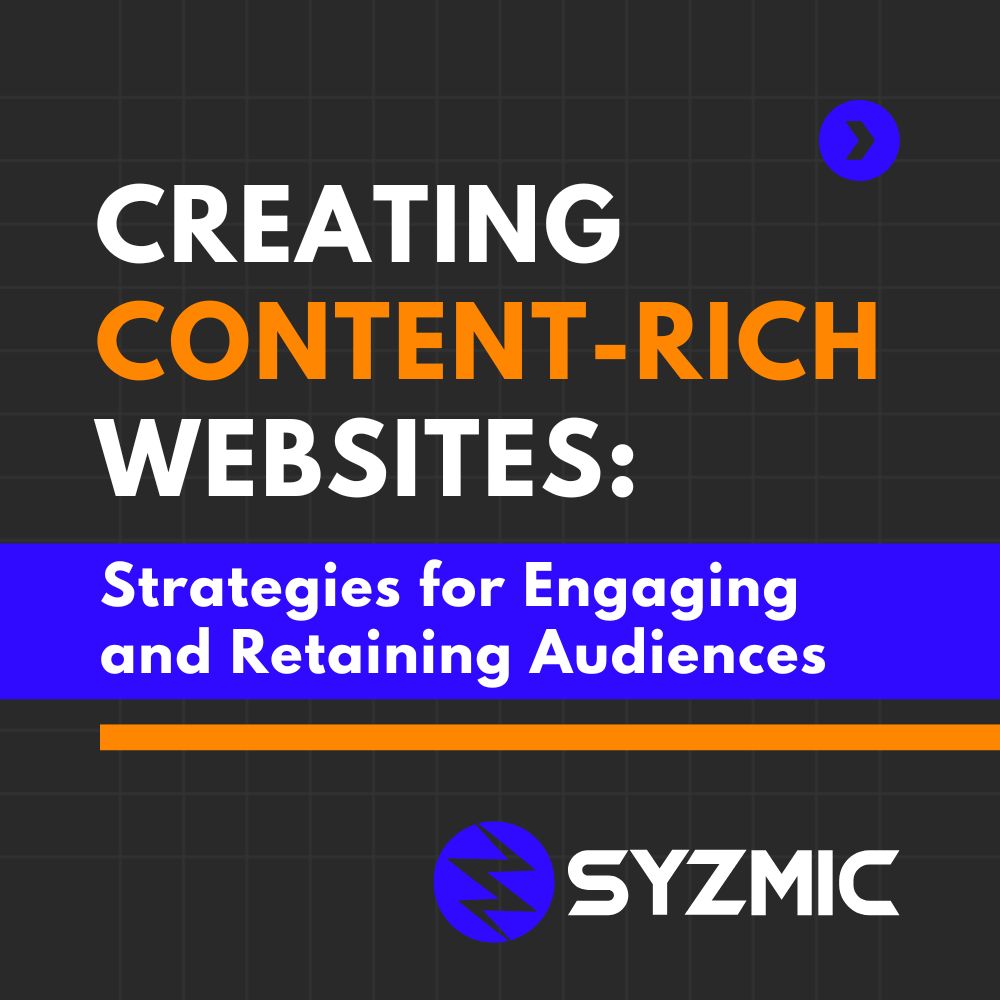In the digital age, content is king. A content-rich website goes beyond a mere online presence; it becomes a powerful tool for engaging and retaining audiences. As the online landscape continues to evolve, users seek valuable, informative, and entertaining content that resonates with their needs and interests. In this blog, we will explore strategies for creating content-rich websites that captivate audiences, encourage repeat visits, and foster lasting relationships.
Understanding the Importance of Content-Rich Websites
Content-rich websites serve as digital hubs that attract, inform, and engage users. Valuable content establishes authority, builds trust, and nurtures connections with the target audience. By offering diverse and compelling content, websites can become go-to resources, positioning brands as thought leaders in their respective industries.
Knowing Your Audience and Their Needs
Before creating content, it is essential to identify and understand the target audience. Conduct thorough market research, analyze user behavior, and create buyer personas. By knowing their pain points, preferences, and aspirations, you can tailor content to address their specific needs effectively.
Developing a Content Strategy
A well-defined content strategy is the foundation of a content-rich website. Outline content themes, formats, and posting schedules to maintain consistency and relevance. Incorporate various content types, such as blogs, videos, infographics, and podcasts, to cater to different audience preferences.


Crafting Engaging and High-Quality Blog Posts
Blog posts are the heart of a content-rich website. Create informative and well-researched articles that offer practical solutions, insights, or industry updates. Engaging headlines, clear formatting, and visual elements like images and videos enhance readability and user engagement.
Leveraging Multimedia Content for Impact
Multimedia content, such as videos, podcasts, and interactive infographics, provides an immersive and memorable user experience. Engaging multimedia content keeps users on the website for longer, increasing the chances of conversions and encouraging return visits.
Encouraging User-Generated Content
User-generated content (UGC) empowers audiences to become brand advocates. Implement strategies to encourage customers to share their experiences, testimonials, and user-generated media. UGC builds authenticity and trust, reinforcing the website’s content-rich reputation.
Implementing Content Personalization
Leverage user data and web analytics to offer personalized content recommendations. Tailoring content to individual preferences enhances user satisfaction and drives engagement, as users feel a stronger connection with the website.
Establishing an Engaging Content Calendar
Consistency is key to maintaining an engaged audience. Develop a content calendar that outlines when and what content will be published. This keeps the website fresh, and users will know when to expect new content, encouraging them to return regularly.
Promoting Social Sharing and Interaction
Integrate social sharing buttons and encourage users to share content on their social media platforms. Facilitate user interaction through comments, polls, or quizzes. These social elements create a sense of community and increase content visibility.


Incorporating Interactive Content Experiences
Interactive content, such as quizzes, surveys, and assessments, provides an engaging way for users to interact with the website. Interactive elements enhance user participation, extend dwell time, and create a sense of personalization.
Ensuring Mobile Responsiveness
In the mobile-driven era, a content-rich website must be optimized for various devices and screen sizes. Mobile-responsive design ensures that users have a seamless experience across smartphones, tablets, and desktops.
Optimizing Website Speed and Performance
Website speed directly impacts user experience and search engine rankings. Optimize website performance by compressing images, minifying code, and using content delivery networks (CDNs) to serve content from geographically closer servers.
Implementing Search Engine Optimization (SEO)
SEO is crucial for driving organic traffic to a content-rich website. Conduct keyword research, optimize meta tags, and focus on high-quality, relevant content to improve search engine rankings and visibility.
Utilizing Calls-to-Action (CTAs) Strategically
Strategically placed CTAs prompt users to take desired actions, such as subscribing to newsletters, downloading resources, or making purchases. Compelling CTAs guide users through the customer journey, increasing conversions.
Monitoring Performance and Analyzing Data
Web analytics provide valuable insights into user behavior, content performance, and conversion rates. Regularly monitor website analytics to identify trends, strengths, and areas for improvement. Data-driven decisions lead to continuous optimization and audience engagement.
Conclusion
Creating a content-rich website is an art that blends creativity, strategy, and user-centricity. By understanding the needs and preferences of the target audience, crafting engaging content, and implementing user-friendly features, websites can attract and retain audiences effectively. The strategies mentioned in this blog are foundational pillars for building content-rich websites that captivate, inform, and delight users, ultimately fostering lasting relationships and driving business success. Embrace these strategies and embark on a journey to create a content-rich digital destination that leaves a lasting impact on your audience.








0 Comments